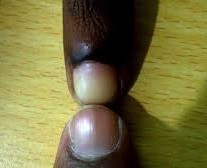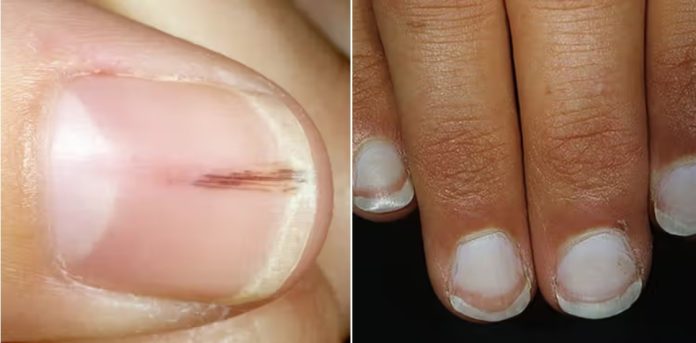Your fingernails are more than just a spot to cover in nail polish. They could provide a window into your health – as a subtle sign on them could suggest you have a dangerous form of heart disease that may cause no noticeable symptoms.
If you notice a red pulsation in your nail bed when you press down your nail that’s a “bad sign”, according to emergency response doctor, Dr Joe.
The emergency response doctor recently took to Instagram to warn his 400k followers that this subtle throbbing movement – called Quincke’s sign – could be caused by aortic regurgitation. This a potentially serious heart condition where the organ is forced to work harder than usual, the ER doc said in a video.
Joanne Whitmore, lead nurse at the British Heart Foundation (BHF), gave further insight on what a pulsation in your nails could mean.

“Quincke’s sign in the nail bed can be a sign of severe aortic valve insufficiency, as well as other heart conditions,” she explained.
Normally, your blood flows around your hear and the rest of your body in one direction. The BHF compares it to a “one way traffic” system. Your heart valves are tiny flaps of skin that open and close like doors with every heartbeat. They are essentially the traffic controllers in this situation, as they control the direction of your blood flow and stop it from flowing backwards.
You have four of them – called pulmonary, tricuspid, mitral and aortic valves. The aortic valve controls the flow of blood out from the heart to the rest of the body.
Joanne said: “Aortic regurgitation means the aortic valve does not close fully and the blood can leak back into the heart instead of forwards into the body. These problems can put extra strain on your heart and make your heart work harder.”
There are a few causes of heart valve disease – when one or more of your valves don’t work – including:
- Being born with an abnormal valve
- Having rheumatic fever – a rare complication that can develop after a bacterial throat infection, causing painful joints and heart problems
- Having heart muscle disease – called cardiomyopathy
- Your heart muscle being damaged from a heart attack
- Getting older
- A heart infection – called endocarditis
Over time, it can increase your risk of suffering a heart attack or stroke.
Another form of the condition is when valves get narrower and don’t open fully, blocking or restricting the flow of blood.
- The 6 other symptoms of heart valve disease
“Some people with heart valve disease have no symptoms,” according to Joanne. But others may experience:
Swollen ankles and feet - A fluttering or pounding feeling in the chest or neck (known as palpitations)
- Dr Joe warned that another sign of aortic regurgitation is what’s known as Corrigan pulse – an excessive and visible pulsation in the neck.
Recent research by the University of East Anglia found that over half of supposedly “healthy” adults over the age of 60 may have heart valve disease.
Researchers carried out heart scans on almost 4,500 people aged over 60, who where outwardly healthy and had no symptoms.
Over a quarter – 28 per cent – were found to have previously undetected heart valve disease. The disease can range from mild to moderate and severe.
Those with a mild form will often have no symptoms and might not need treatment – though checkups every few years are advised.
But Joanne said: “If your heart valve disease is moderate or severe you will usually need treatment, involving medicines and/or surgery.
Source: The Sun


